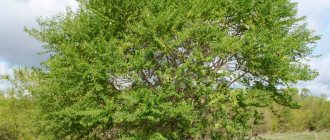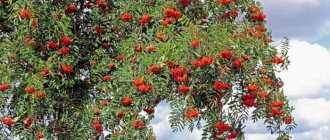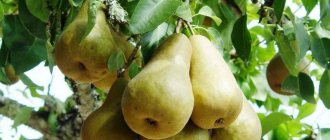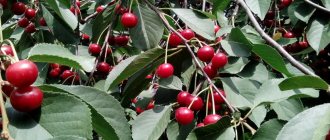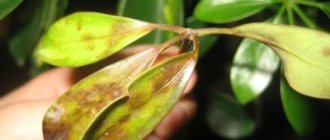Midsummer is especially beautiful with its fragrance; the linden tree begins to bloom. We can hear the hum of bees around and we can inhale the aroma of honey. The linden tree is the most respected tree among the Russian people. Settlements and even mountain systems and forests were named after this plant.
Many names for women came from the name of this tree. And the month of July is named after the linden tree by the Ukrainian population. Linden is associated with feminine affection and kindness. The linden tree was also the mother tree and was equated with divine plants.
They say that linden can feed, put on shoes and give health.
Many household items used to be carved from linden wood. And the honey from linden nectar turned out simply excellent.
Where does the linden tree grow?
The genus Linden (Tilia - lat.) belongs to the Malvaceae family and unites more than 45 species of trees and shrubs. These beautiful deciduous plants can be found almost throughout Russia from the Caucasus to Arkhangelsk, in Siberia and the Far East. Throughout Europe as far as Finland, as well as in China and North America.
In our country, in Bashkiria, Tatarstan, and Chuvashia, entire forest areas grow. In the Kuzbass in the west of the Kuznetsk Alatau there is a forest with a huge territory of 11 thousand hectares, called “Linden Island”. In 1983, by government decree, it was given the status of a living natural monument. 23 species of linden grow in this place, not counting oaks and conifers.
In Russia, the most common species is the small-leaved, heart-shaped linden, but Siberian, Amur, Far Eastern, and Khabarovsk linden are also found. There are American, Chinese and other lindens.
Depending on the species, an adult tree can reach 120 years of age and grow up to 30-40 meters. There are specimens that are already 500-600 years old, and in Germany there is a linden tree that has reached 1200 years old and is unique.
Main types and varieties
Linden is a common tree (photos and descriptions can be found in a book about botany). Its varieties can be seen in textbooks of the Far East, the Caucasus, and Siberia. At the beginning of 2013, 45 species were officially documented.
The main ones from this number are the following linden specimens:
| Name | Short description |
| Siberian | Range: Western Siberia. A tree has a long life cycle. On average - 225 years. Maximum height 30 m, trunk diameter - 5 m. Leaves are small - 5 cm in length. The bark is brown. Flowering occurs at the end of July or the first ten days of August. Yellowish inflorescences are collected in spherical ovaries. Linden does not tolerate marshy soil, but grows easily in shaded areas. |
| Common or heart-leaved European | Range: European countries and territories of the former Soviet Union. The exception is the Far North. The characteristics are similar to small-leaved species. The main difference: flowering begins 14 days earlier. The tree can withstand negative temperatures. Thanks to this, linden is used in the landscape design of public gardens. The species is considered to be long-lived. The age of individual specimens is 1250 years. The linden bush takes the shape of a regular ball. The height of an adult tree is no more than 40 m. Diameter is 5 m. The variety is classified as an ornamental species. Blooms in June. This period lasts 14 days. Grows in illuminated areas with neutral soil composition. |
| large-leaved | Grows in the Caucasus, Ukraine, Moldova and a number of European countries. The tree is long-lived. The height is no more than 40 m, and the diameter is 5 m. The shape of the crown resembles a spreading pyramid in its outline. The plant actively grows on fertile soil. Flowering occurs in July. At this time, the tree is strewn with yellow buds. The variety is not afraid of unfavorable conditions. Easily withstands prolonged absence of rain. Suitable for landscaping. |
| Manchurian | Range: Far East. The trunk is 20 m high. The crown is in the form of a wide oval. The leaves are large - up to 30 cm in length. Flowering lasts 3 weeks, starting in July. Panicles drooping, large in size. Thanks to these features, bees can obtain nectar even on days with precipitation. The tree tolerates adverse conditions well. Used in landscape design. |
| Winter (heart-shaped with small leaves) | It grows in the Caucasus-Crimean region, in the western territories of Siberia, the Urals, and Finland. A tree has a long life cycle. There are specimens that are 800 years old. Growth is picking up slowly. An adult plant reaches a height of 30 m. The bush is branched, spherical, spreading. An interesting fact is that the shoots in the upper part grow vertically towards the sky, the middle shoots grow horizontally, and the lower ones stretch towards the ground. The tree mainly occupies fertile soils. The shape of the leaves served as the name for this linden variety. The green plates resemble a heart. The flowering period falls in the last ten days of June. Linden is endowed with unpretentiousness and endurance. He is not afraid of drought and frost. At the same time, for full development it needs fertile lands with a light texture. Wood is used in landscape design. |
| Amurskaya | Range: Korea, China and the Far East. Grows in river valleys and on mountain slopes. There are many similar characteristics to the small-leaved species. The trunk of an adult tree does not exceed 30 m in height. Its diameter is 1 m. The average life expectancy is 300 years. The crown is oval in shape. The bark is grey-brown. Large heart-shaped leaf blades. The length can be 7 cm. Flowering begins in the 1st decade of August. It is an excellent honey plant. From 1 hectare of plantings you can get 1 thousand kg of honey. The plant is frost-resistant. In many countries this species is protected by law. Linden leaves are allowed to be eaten by livestock. |
| American black | Distributed in the eastern territories of North America. The species got its name due to the black color of the outer layer of wood. Adult specimens reach a height of up to 40 m. The crown diameter is 20 m. The leaves are 20 cm long and 13 cm wide. Flowering occurs in the middle of July. The plant can withstand frosts down to -40°C. Wood is used in urban landscape design. |
| Felt silver | This species has decorative characteristics. In this category of trees, “Brabant” and “Varsaviensis” stand out. The plant is grown in the Caucasus, Ukraine, Asia, the Baltic States, the Balkans, and a number of European countries. The crown has the shape of a pyramid. The trunk is straight. Stretched up 30 m. In young plants, the bark is still smooth to the touch. The life cycle is short compared to other types of linden - only 200 years. It got its nickname, silvery, due to the pubescence on the back of the leaf blades. When the bright sun shines, their edges bend upward. Due to this, the lower part of the leaves, which is covered as if with felt, is exposed. In the rays of the sun a silvering effect is created. The plant begins to bloom in mid-July. This period lasts 10 days. |
| Japanese | Grows in East Asia. There are more than 40 varieties. Among them you can find specimens used in landscape design. The tree is low - 20 m in height. The bush is oval in shape. The leaves are small - no more than 7 cm in length. Flowering occurs at the end of July and lasts the first ten days of August. The tree is a good honey plant. It is frost-resistant and unpretentious. |
| Caucasian | Can be seen in the territories of the Caucasus, Crimea and Asia Minor. Adult specimens do not exceed 35 m in height. The diameter of the trunk in the ground part is 2 m. The crown takes the shape of a cone. The older the tree, the more dense and rounded its bush becomes. The species is growing rapidly. The average life cycle is 300 years. It is a valuable ornamental variety. The leaves are large - 15 cm in length. It begins to bloom in the last ten days of June. The tree is frost-resistant (down to -28°C), tolerates shading and dry periods. |
In addition, in Eurasia there are the following varieties of linden (including its introduced varieties):
- Mongolian.
- Western.
- Begonifolia.
- Short-rayed.
- Variegated.
- Small rib.
- Ostrovnaya.
- Linden Henry.
- Woolly columnar.
- Caroline.
- Nashchokina.
- Mikel.
- Maksimovich.
- Summer.
- Linden Take.
- Noble.
- Red.
Cultivated varieties of trees are also distinguished:
- Petiolate.
- Painted.
Wood is used to make things of low strength. For example, crafts, souvenirs. There are cases of using linden material in grape craft. It is used to make vats for squeezing berry juice.
Appearance of linden tree
- Bark. Young trees have smooth, shiny, reddish bark. With age it becomes dark and rough, covered with cracks.
- Leaves. The leaves of the plant are bright green in summer and yellow in autumn. They have oblique-oval, heart-shaped, oblique-heart-shaped shapes. The edges are wavy or ribbed (serrated). Dimensions depend on the species, usually 6-9 cm.
- Color. Linden flowering begins, depending on the region of growth, from mid-June to early July and lasts about two weeks. The flowers are small, golden or cream-colored, collected in umbrellas of 3-8 pieces, hanging in whole clusters. Each flower has five petals, five sepals, many stamens and one pistil.
- Seeds. In autumn, small round or oval nuts, ribbed or not, ripen on the tree. These seeds are attached in 2-3 pieces on petioles with wings. In autumn and winter, the wind tears them from the tree and carries them quite far.
Features of flowering on the site
Linden is a tree (photos and descriptions of different species have similar features) beautiful, with decorative characteristics. During flowering, the green crown is covered with millions of fragrant buds.
This period for most species begins in the last ten days of June or early July. This late flowering is due to the absence of flowers in winter buds. They appear only on one-year-old shoots.
On the site, from planting a tree to its flowering, it takes from 10 to 20 years. You can admire the beauty of the plant for only 2 weeks. If in the first half of spring the weather conditions were unfavorable, then the linden tree may not produce flowers.
Large-leaved species begin to bloom fastest. Later - the Amur and Manchurian varieties. If you want to achieve abundant flowering, then the linden tree should be planted in an open and bright area of the garden.
Linden tree propagation
There are several ways to propagate linden: by seeds, layering, cuttings, grafting.
- The longest method is seed propagation.
- The nuts need to be soaked for several months in damp sawdust at a temperature of 0 +4.
- Then they are planted in boxes with loose fertilized soil.
- But even all the manipulations do not guarantee greater germination.
- A tree grown from a seed reaches maturity only by the age of 12.
Cuttings are also not a reliable method; the branches do not take root well. Grafting and layering are more convenient methods. Rooted cuttings are then planted in parks and along roads.
Linden wood
Characteristics. When cut, linden has a uniform light white or slightly brownish color and does not darken over time. The rings are thin, not very pronounced, the texture is smooth and shiny.
Linden wood has a low density, which increases significantly as it dries out. The volume shrinkage coefficient is high - 0.58. Has poor resistance to rotting.
Application and beneficial properties of linden
Linden tea is one of the most common home remedies for colds: a tablespoon of linden flowers is brewed in a glass of boiling water, and the infusion is kept under a napkin for 20 minutes before drinking. The infusion should be golden in color, with a pleasant taste and aroma. To sweat well, you need to drink at least two glasses, and even better, add an equal amount of dried raspberries to the linden blossom, which also contains a strong diaphoretic substance - salicylic acid. Linden infusions help treat sore throats and relieve headaches. Herbal healers give linden decoctions to children as an analgesic and sedative for mumps and measles, and to adults for nervous diseases and convulsions. It is recommended to drink the decoction hot (a tablespoon of flowers in a glass of water, boil for 10 minutes). For more effective action, you can drink 2...3 glasses of hot broth before bed. The inflorescences and stipules contain mucus. When brewed linden tea is infused and cooled, a gelatinous viscous mass is formed, which is used in the form of lotions to treat burns, ulcers, hemorrhoids, joint inflammation, gout and rheumatism. For the same purpose, young bark is used, the fibers of which are especially rich in mucus. Decoctions of linden leaves are taken to remove sand during pain in the urethra. Compresses with decoction relieve headaches. Coal obtained by burning wood, due to its adsorption properties, is taken orally for dysentery, bloating and diarrhea (in some areas, by distilling water vapor from wood infusion, a disinfectant liquid was obtained, which was sprayed into rooms where infectious patients lay). Modern pharmacology suggests that the healing properties of linden inflorescences are due to a complex of biologically active substances. Herbal preparations in the form of infusions and decoctions of linden blossom, in addition to their diaphoretic effect, increase the secretion of gastric juice and facilitate the flow of bile into the duodenum. In addition, linden inflorescences have a beneficial effect on the central nervous system, so their infusions are recommended to be taken as a sedative for increased nervous excitability. Extract from inflorescences is used for mild digestive and metabolic disorders. In pharmacies, linden blossom is sold in packs of 100 g and in the form of briquettes (a slice of briquette is brewed in a glass of boiling water, boiled for 10 minutes, filtered and drunk like tea); Young leaves can be used for food and added to spring salads, increasing their vitamin content. During the war, linden leaves were added to soups and mashed potatoes; Having crushed the leaves into powder, mixed them with a small amount of flour and baked flat cakes from this mixture. The fruits are the raw material for the production of fatty oil, characterized by a light yellow color and a faint linden-blossom odor. Linden oil is considered one of the best as a confectionery fat, and the cake left after pressing the oil is used as livestock feed. In addition to small-leaved linden, large-leaved linden is widely cultivated in city gardens and parks.
Contraindications to the use of linden blossom and tea
Linden blossom decoctions should be drunk with short breaks and in reasonable quantities, otherwise vision may deteriorate greatly, quite unexpectedly and quite quickly. But this does not mean that you can go blind if you drink linden tea every day. We are talking about a very long-term use, without measure and without breaks, which, in addition to weakening vision, can provoke insomnia, irritability, increased blood pressure, and pain in the heart. Drink tea for a few days, one cup at a time, take a break for a week - and everything will be fine.
Application of wood
Linden is well used in crafts: for making handicrafts, wooden dishes, boxes, nesting dolls, and wood carvings. Thanks to its softness, cutting, sanding, and impregnation will not cause difficulties.
It will be very successful to use linden for the interior lining of a bathhouse, because... the material does not heat up much, but retains heat for a long time without emitting foreign odors. Also suitable for interior cladding.
Linden is also used to make musical instruments due to its good flexibility and acoustic properties.
Linden holds its shape well, so drawing boards, plywood, pencils, food containers, and barrels are made from it.
Diseases and pests
The tree is not immune from diseases and pests.
Threats that can harm plant health:
- Drying of the tree caused by infections.
- Fungal diseases.
- Tinder fungus.
- White rot.
You can fight troubles with the help of Actelite. For prophylactic use, Fitosporin is used. For preventive action, it is necessary to carry out no more than 1 treatment per season.
Also, threats to the tree are:
- Soldier bugs.
- Willow scale insect.
- Goldentail butterfly.
- Linden mite.
- Leaf roller.
- Medvedka.
In the ground, the root system can be destroyed by voles, shrews and yellow-throated mice. Therefore, the tree trunk circles are regularly loosened and the soil is treated with a soap solution.
Pests are controlled with insecticides. They are selected taking into account the type of insects. Tree pruning helps eliminate parasites. Thanks to it, the buds in which insects can overwinter are destroyed. Affected branches must be burned.
Caring for any type of linden tree will not be difficult for a gardener with little experience. The tree requires regular pruning, watering and loosening of the tree trunk. Descriptions of characteristics, as well as photo instructions, allow you to grow this species in any area.
The benefits of linden blossom
Linden collection is very good for health. It is used both separately and with other herbs in combination. Linden has antipyretic, diaphoretic and anti-inflammatory effects.
- Helps you relax as well as valerian.
- The decoction is used to gargle and as an expectorant.
- Helps with weight loss, because... removes excess fluid from the body.
Flowers begin to be collected at the beginning of flowering, when 3-4 flowers from the entire inflorescence have bloomed. They are picked with a whole umbrella and dried in a shaded place. The raw material dries out approximately three times, this should be taken into account when preparing.
The scope of application of linden color is extensive, but it is not suitable for permanent use. Don't overuse it, everything is good in moderation.
Description
Linden has long been known for its medicinal properties, but only in the last century were scientific studies carried out to study its chemical composition and confirm its beneficial properties.
Latin name: Tilia cordata.
English names: small-leaved lime, littleleaf linden or small-leaved linden.
Family: Malvaceae (Malvaceae).
Synonym: Tilia cordata.
Parts used: buds, flowers, leaves, bark, wood ash.
Botanical description: Tall tree (20-40 m) with a vertical trunk and an oval, compact crown formed by ascending upper branches, horizontally growing middle branches and lower branches hanging down.
The leaves are medium sized (6 cm), glossy dark green above and grayish below. Yellow-white, small flowers in clusters of 5-7 pieces have an extremely pleasant aroma. It blooms in late June - early July for 10-15 days.
Linden honey
Linden honey is considered to be the most beneficial in the world. Contains many trace elements, amino acids, vitamins and enzymes. It helps with colds and inflammation, improves the functioning of the cardiovascular, nervous and respiratory systems of the body. Helps with the functioning of the liver, kidneys and gall bladder.
Linden is simply an excellent honey plant. In a good year, bees collect more than 1000 kg of honey from one hectare of linden plantations.
Landscape gardening
Linden is very often used in landscape design, because it has beautiful and dense foliage and tolerates pruning easily. It is easy to create any geometric shape from the crown.
A little history
In the old days, nobles planted linden alleys around their estates. They loved to walk in the shade of the dense, beautiful crowns. Some plantings have survived to this day in the form of parks.
Until the twentieth century, the main shoes of peasants were bast shoes. One peasant wore out up to 40 pairs of bast shoes per year. And for each pair it was necessary to peel off 2-3 young stickies. They made both bast and matting from it.
In many countries, linden was considered a sacred tree; it was planted near churches, and rituals were performed under it.
Care and cultivation, pruning of branches
The tree is moisture-loving. Therefore, in dry areas the plant should be watered. Seedlings older than 5 years are not afraid of water shortages. After planting, for the first 2 years, fertilizers with nitrogen are applied to the tree trunk circle. This improves the formation of green mass.
When choosing a place to plant, you need to look for fertile and moisture-permeable soil. The tree does not like large accumulations of salts in the soil. Reacts well to the addition of lime. There is no need to wrap the plant for the winter. Almost all varieties have high frost resistance.
The root system of the plant goes deep into the soil and grows in breadth. Therefore, dense plantings will negatively affect tree growth. The first pruning of the crown occurs in the 3rd year of the seedling’s life. At this time, it is recommended to shorten the side branches by 1/3. This will form the top of the tree and emphasize its axial symmetry.
Some recommendations for caring for linden trees on your site:
| Action | Description |
| Watering | Young trees need moisture at the rate of 20 liters per 1 m² of crown projection. The procedure is done during a long drought. |
| Top dressing | Conducted 2 times per season. In the spring you can make the following solution: 20 g of urea, 1 kg of manure, 10 liters of water, 25 g of ammonium nitrate. In autumn, use 20 g of nitroammophoska per 10 liters of liquid. |
| Loosening | You can harrow the ground near the tree trunk. The procedure is done 2-3 times a year. Remove weeds. |
| Mulching | In winter, the tree trunk circle is covered with a layer of peat, fallen leaves, and wood chips. Its layer is from 10 to 12 cm. |
Care also includes inspecting the tree for parasites and diseases. This will allow you to react in time and prevent his death.
